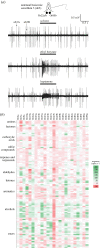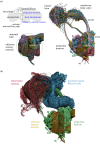Drosophila olfaction: past, present and future
- PMID: 36515118
- PMCID: PMC9748782
- DOI: 10.1098/rspb.2022.2054
Drosophila olfaction: past, present and future
Abstract
Among the many wonders of nature, the sense of smell of the fly Drosophila melanogaster might seem, at first glance, of esoteric interest. Nevertheless, for over a century, the 'nose' of this insect has been an extraordinary system to explore questions in animal behaviour, ecology and evolution, neuroscience, physiology and molecular genetics. The insights gained are relevant for our understanding of the sensory biology of vertebrates, including humans, and other insect species, encompassing those detrimental to human health. Here, I present an overview of our current knowledge of D. melanogaster olfaction, from molecules to behaviours, with an emphasis on the historical motivations of studies and illustration of how technical innovations have enabled advances. I also highlight some of the pressing and long-term questions.
Keywords: Drosophila melanogaster; animal behaviour; neural circuit; neurophysiology; olfaction; olfactory receptor.
Conflict of interest statement
I declare I have no competing interests.
Figures





References
-
- Barrows WM. 1907. The reactions of the pomace fly, Drosophila ampelophila Loew, to odorous substances. J. Exp. Zool. 4, 515-537. (10.1002/jez.1400040403) - DOI
-
- Weiner J. 1999. Time, love, memory: a great biologist and his quest for the origins of behavior. New York, NY: Knopf.
Publication types
MeSH terms
LinkOut - more resources
Full Text Sources
Molecular Biology Databases
Miscellaneous

